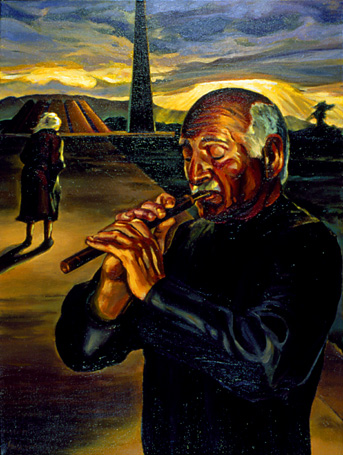Duduk History

The Duduk, pronounced "doo-dook", is considered the most Armenian of all folk instruments because of its Armenian origins and its ability to honestly express the emotions of the Armenian people. It has a 1500 year history and is native to Armenia although there are variants played in Turkey, Georgia, and Azerbaijan. The duduk reflects the passion, celebration, and suffering of Armenia. Aram Khatchadourian once said that the duduk is the only instrument that made him cry. The soulful sound of the duduk has recently been in the World Music spotlight thanks to musical artist Peter Gabriel. Gabriel has integrated duduk into his recordings. The duduk is a cylindrical instrument made of apricot wood and in typically 28, 33, or 40 cm in length. It has 8 or 9 holes and 1 thumbhole which provide a range of one octave. The double reed, also known as ramish or yegheg in Armenian, is typically 9-14 cm. in length and is surrounded by a thin flexible wood binding that slides along the length of the reed. This binding is used for tuning the duduk as it controls the opening/closing of the reed. The reed itself grows plentifully along the Arax River in Armenia. The sound of the duduk is warm, soft, and has a slightly nasal timbre. The dynamics of the sound are controlled by adjusting the pressure of the lips on the reed and by covering the finger holes. Although the duduk is tuned to be untempered and diatonic, chromatic notes can be obtained by partially covering the finger holes. The duduk is typically played in pairs with the lead duduk playing the melody and the second duduk playing a sustained pitched called the dam. The dam is a tonic drone that serves as a constant counterpoint to the melody. The player of the dam, called damkash, maintains this drone by using a circular breathing technique. This procedure involves inhaling through the nose and storing the air in puffed up cheeks while maintaining lip pressure on the reed. The duduk is also typically accompanied with a dhol, the double-sided Armenian drum. The dhol is known for its upbeat Armenian dance rhythms. However, even when the duduk is playing songs of lament the gentle touch of the dhol provides a suitable background.
